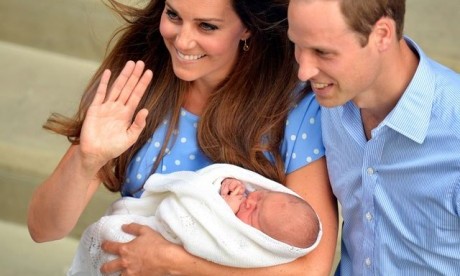If there’s one thing that will remind a woman she is, at her core, no different from the rest of humanity, it is childbirth. From the second that first ‘is-it-real-or-is-it-a-phantom?’ contraction set in until the exhilarating moment when her son was urged and cajoled and squeezed from her weary body, Kate Middleton would have understood implicitly that childbirth is life’s great leveller.
It is the one thing that unites every mother in its inescapable embrace: we have sex, we conceive, with little effort (for most) we grow within us a cluster of cells that morphs and roils and shapes itself into a human being; like some unstoppable experiment, this invisible life-force extrudes from our core and imprints upon our bones so that our skin itches with the stretch and our backs ache with the pressure and our pelvises are so bruised and heavy we can no longer bear it.
And then, just as we feel we might erupt, nature commands us to expel this animated being from our body. Whether this squashed little stranger we have incubated is born naturally or surgically, whether it emerges black, white, rich or poor, the singular experience of childbirth condenses the mother to her most primeval: we are animals who have grown within us new life and then released that new life into the great big world.
But this is where the similarities end. For Kate, the experience would have been riven with anxieties that no other mother has had to endure: the international press camped outside her labour suite; the comments on Twitter from millions of voyeurs demanding to know why her baby was ‘late’; all her days of motherhood, from the very moment her pregnancy was prematurely revealed, lived under a penetrating, fault-finding microscope. Continue reading
Sources
- Catherine Marshall in Eureka Street
- Image: Vanity Fair
Catherine Marshall is a journalist and travel writer.
